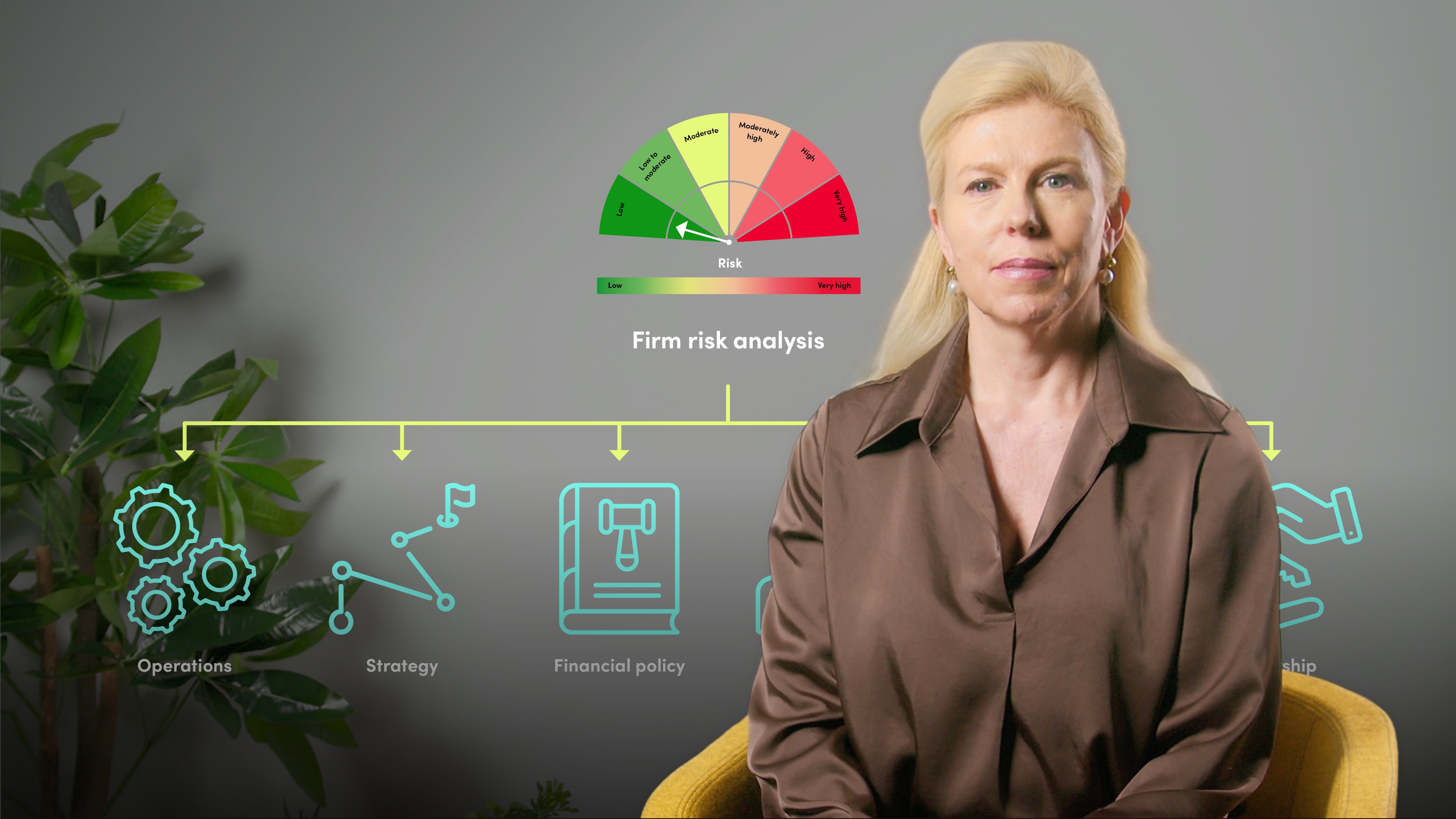
Qualitative Analysis for Corporate Valuations

Sarah Martin
30 years: Corporate Valuations
In this video, Sarah Martin explores the crucial qualitative factors that underpin robust corporate valuations, often overlooked despite their significant impact. She explains how to conduct a top-down qualitative analysis, beginning with sovereign and macroeconomic risks, then moving to sector-specific risks, and finally, firm-specific business risks, all of which directly influence a firm's risk profile, growth outlook, and WACC.
In this video, Sarah Martin explores the crucial qualitative factors that underpin robust corporate valuations, often overlooked despite their significant impact. She explains how to conduct a top-down qualitative analysis, beginning with sovereign and macroeconomic risks, then moving to sector-specific risks, and finally, firm-specific business risks, all of which directly influence a firm's risk profile, growth outlook, and WACC.
Subscribe to watch
Access this and all of the content on our platform by signing up for a 7-day free trial.

Qualitative Analysis for Corporate Valuations
15 mins 30 secs
Key learning objectives:
Understand the importance of qualitative analysis in corporate valuations
Identify the three key areas of qualitative analysis
Identify how sovereign and sector factors influence a firm's risk profile and growth prospects
Understand the various firm-specific factors to consider
Overview:
Subscribe to watch
Access this and all of the content on our platform by signing up for a 7-day free trial.
Qualitative analysis is typically divided into three key areas:
- Sovereign and macro risk: Factors related to the countries in which the firm operates, such as economic growth, borrowing costs, and political stability
- Sector or industry risk: Factors specific to the industry the firm operates in, including demand trends, regulation, competition, and capital intensity
- Firm-specific risk: Factors unique to the individual firm, such as its operations, strategy, financial policy, management, corporate governance, and ownership structure
Why is a top-down approach recommended for qualitative analysis?
A top-down approach, starting with sovereign/macro analysis, then sector, and finally firm-specific, is recommended because a firm's risk profile and growth outlook are heavily influenced by the countries and sectors in which it operates. Even a strong firm struggles to overcome significant sovereign or sector-wide challenges.
How does sovereign and macro risk analysis impact a firm's valuation?
- Operations: Factors like scale, cost efficiency, distribution network, customer base, geographical/product/customer concentration, climate change adaptation, regulation, and competitive advantages (e.g., brand names). For some sectors, innovation and marketing skills are also crucial
- Strategy: The group's stated strategy for investments (new assets, markets, acquisitions), M&A activity, disposals, and restructuring under-performing operations
- Financial Policy: The firm's approach to leverage, hedging financial risks (interest rates, currencies, commodities), dividend and share buyback policies, use of hybrid debt, and managing investor relationships
- Management and Corporate Governance: The quality and track record of board members, succession plans, mechanisms for replacing under-performing members, and compliance with corporate governance codes
- Ownership: The impact of different ownership structures (private, publicly listed, state-owned) on the firm's strength, capital raising, and potential for excessive distributions or adverse M&A
Subscribe to watch
Access this and all of the content on our platform by signing up for a 7-day free trial.

Sarah Martin
There are no available Videos from "Sarah Martin"


























